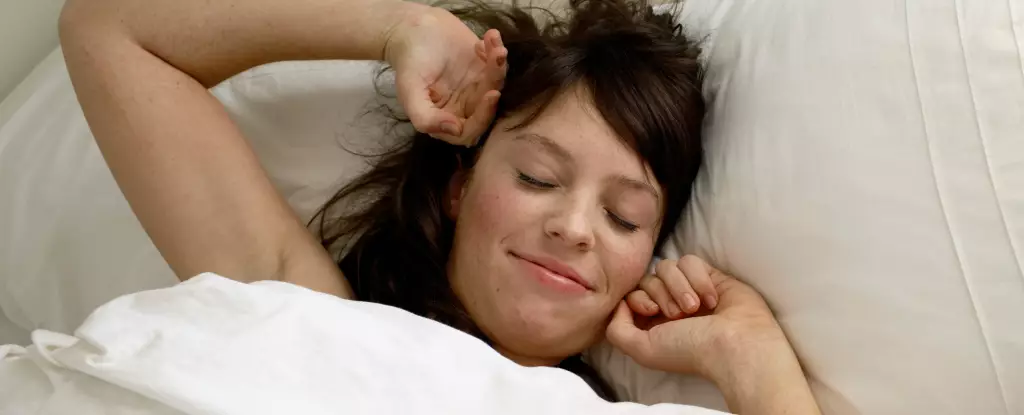In the realm of problem-solving and creativity, sleep emerges as a vital player, possessing the power to unlock new perspectives and solutions. John Steinbeck famously expressed the resolution of difficult problems through sleep, suggesting that resting the mind can lead to clarity and insight. Modern research increasingly supports this notion. As we delve deeper into the science of sleep, it becomes apparent that the hours spent resting can be more productive than they seem, catalyzing creative breakthroughs and enhancing decision-making capabilities.
Recent studies indicate that our decision-making processes are significantly influenced by the state of our subconscious mind during sleep. A study conducted by researchers at Duke University utilized a garage-sale game to illustrate how snap judgments can cloud rational thinking. Participants who made quick decisions based solely on initial impressions tended to overlook valuable items buried within the virtual boxes of goods. However, when allowed to sleep before making their choices, participants displayed marked improvement in their decision-making, showcasing a more nuanced comprehension of the items’ worth.
This illustrates a critical point: while immediacy may present clarity, the subconscious often processes information more holistically following a period of rest. Sleep enables us to reflect on the broad spectrum of information available, allowing for a more informed and rational approach upon waking. Thus, the clarity gained from a night’s sleep effectively acts as a mental reset, leading to improved outcomes in decision-making.
Moreover, the connection between sleep and problem-solving capabilities is fascinating. A 2019 study illuminated how the act of cueing the brain during sleep can aid in solving previously unsolvable puzzles. Participants exposed to specific sounds associated with the unsolved problems while asleep demonstrated a higher success rate when they revisited these issues upon waking. The findings underscore the potential for sleep not only to foster creativity but also to serve as a crucial period for cognitive processing, wherein the brain engages with unresolved matters.
In essence, sleep serves as a mental workshop, enabling participants to make connections and process divergent pieces of information in ways they might not have done while awake. This phenomenon fosters a deeper understanding of the relationships among various concepts or items, thereby paving the way for innovative insights upon awakening.
The capacity of sleep to reveal subtle relationships and associations between seemingly unrelated ideas was further examined in a 2023 study. Participants who learned to connect various items—ranging from animals and locations to foods—showed marked improvement in recognizing indirect associations after a night’s slumber. The sleep-deprived individuals, on the other hand, struggled to uncover these connections, thereby reinforcing the idea that our latent cognition is sharper once we are well-rested.
This concept resonates with historical figures such as Thomas Edison and Salvador Dali, who leveraged naps to amplify their innovative thinking. These creative legends understood the transitional phase between wakefulness and sleep as a prime opportunity for inspiration. Edison’s peculiar method of allowing a ball to drop from his hand as he dozed off exemplifies the potential of this hypnagogic state—the twilight zone that bridges reality and dreaming.
The intriguing properties of hypnagogia, which is characterized by dream-like imagery occurring as one drifts to sleep, were explored in a study conducted by French scientists in 2021. Participants faced a math problem designed with a hidden solution; those who briefly entered a light sleep state while engaging in the task were more adept at uncovering the hidden rule governing the problem. This raises critical questions about the interplay between cognitive flexibility and creative thought, as the imagery experienced during hypnagogia can directly inform problem-solving efforts.
Additionally, subsequent studies in 2023 have indicated that the content of hypnagogic imagery can be influenced by recent thoughts or tasks. For example, participants tasked with generating creative uses for trees experienced enhanced problem-solving abilities if their hypnagogic imagery reflected the tree theme. This suggests that even as we drift into unconsciousness, our minds remain intricately linked to our waking pursuits, further reinforcing the concept that sleep can yield productive ideas and solutions.
The interplay between sleep and creativity is nothing short of remarkable. As research continues to unveil the intricate workings of the subconscious mind, it becomes clear that sleep is not merely a passive state of rest but a dynamic process through which we can enhance our cognitive abilities. From refining decision-making to unlocking hidden problem-solving strategies, sleep holds the key to becoming more adept and innovative thinkers. Embracing the night as a time for rejuvenation and discovery is essential; it allows us to harness the untapped potential that resides within our sleeping minds.

Leave a Reply